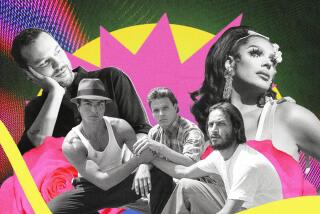Op-Ed: Why L.A. needs <em>La Virgen</em>
Her title in English — Our Lady of Guadalupe — is almost superfluous. She is La Virgen, Mary the mother of Jesus. She appears everywhere in the diaspora of Mexicanidad, the “Mexican-ness” that transcends borders and centuries. She waits on stucco walls, above shop counters and at roadside shrines, eyes downcast in an attitude of tender expectation, to receive appeals in Spanish, Spanglish, English and the polyglot of languages that has always been Los Angeles.
The Virgin is supposed to have appeared to Juan Diego on Dec. 9, 1531, at Tepeyac, a hill near Mexico City where a pre-conquest shrine of Tonantzin (Beloved Mother Earth in Nahuatl) had once stood. Miracles were said to have followed in the days after, including the appearance of her image, still preserved, on Juan Diego’s cloak when he opened it before the astonished bishop of Mexico City. The greater miracle? To those who prayed and trafficked her on city streets, in church sanctuaries and tattoo studios, and into the hearts of Los Angeles, she has never left.
If ever a city needed a mediator between its citizens and their terrors — flood, earthquake, wildfire, civil strife and loneliness — it’s ours. In a city repeatedly destroyed in popular imagination, the Virgin remains constant, even when she’s just a faded turquoise outline framed by the countersigns of taggers.
Apart from the climate, nearly everything we take to be Los Angeles was brought here from somewhere else, and most of that was undocumented. The immigrant Virgin is true to our origins as exiles.
Patroness of the displaced, the Virgin has become the still point of Los Angeles. “¿No estoy yo aqui que soy tu madre?” (Am I not here, I who am your mother?) she reminded a perplexed Juan Diego in the story of her apparitions. Here too, she is mother of the garment worker and day laborer. Mother of the abused and homeless. Mother of the fallen away. It doesn’t really matter from what. Half melancholy, half amused in her portraits, she regards her children’s lack of conviction as only temporary, their needs perpetual.
A city that manufactures images for sale has been given one without a price tag. Los Angeles needs the Virgin, her attentive silence, her modesty and her blended identities — European, Mexicano and Angeleno. A human face like hers, reflecting multitudes and taking in everything of the city, needs to replace the masks of indifference that allow grievances to breed into violence or despair in Los Angeles.
No particular belief is required at the Virgin’s memorials, only a longing to be reconciled. She was present as an indigenous world was ending and a mestizo one was taking shape below the hill of Tepeyac. She’s equally present as Los Angeles seeks a way through its own uncertainties of purpose and mixture of ethnicities so that a new identity might be shaped from all of us.
For the hopeful and fearful, the Virgin is a sign to them that a community of fewer borders and greater compassion is possible.
D.J. Waldie is a contributing writer to Opinion. Photographer Camilo José Vergara’s “Harlem: Unmaking of a Ghetto” was published this year.
Follow the Opinion section on Twitter @latimesopinion
More to Read
A cure for the common opinion
Get thought-provoking perspectives with our weekly newsletter.
You may occasionally receive promotional content from the Los Angeles Times.






